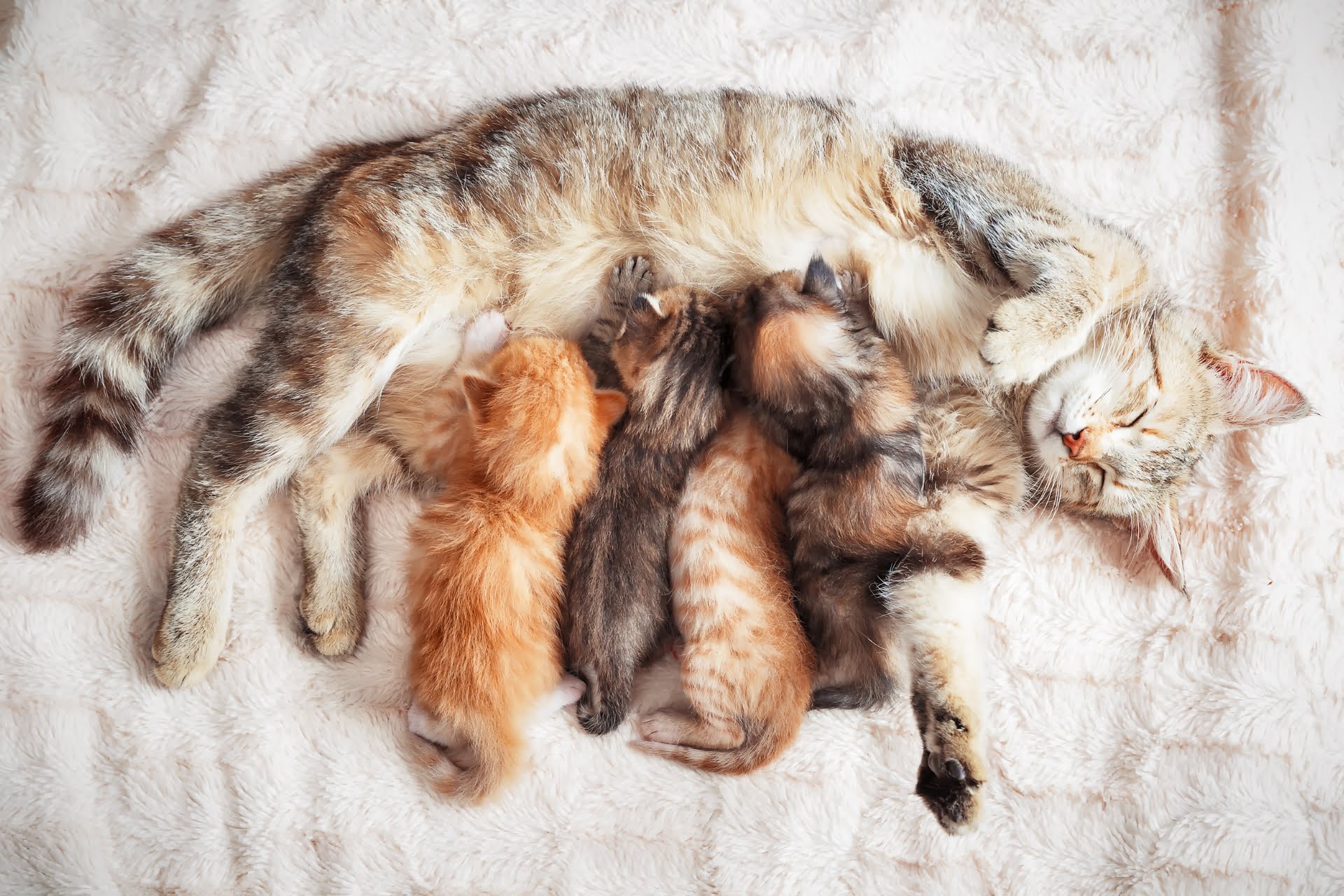Everything You Need to Know About Adopting an Outdoor Cat
Adopting a cat can be an incredibly rewarding experience, and while many people choose to keep their feline companions indoors, there are also those who opt for adopting an outdoor cat. Outdoor cats can lead fulfilling lives while enjoying the freedom and stimulation of the great outdoors. In this article, we will explore everything you need to know about adopting an outdoor cat, from understanding their unique needs to ensuring their safety and well-being.
Contents
Introduction
Why consider adopting an outdoor cat?
When considering adopting a cat, the choice between an indoor or outdoor lifestyle is an important decision. Outdoor cats have the opportunity to explore their natural instincts, roam freely, and experience the sights, sounds, and smells of the outdoor environment. This can contribute to their overall happiness and well-being.
The benefits of outdoor cats
Outdoor cats often exhibit higher levels of physical activity, which can help them maintain a healthy weight and reduce the risk of obesity-related health issues. The outdoor environment provides mental stimulation through exposure to new stimuli, such as wildlife and different outdoor elements. Additionally, outdoor cats may have a reduced risk of certain behavioral problems often associated with indoor cats, such as boredom or destructive behavior.
Understanding outdoor cats
Characteristics of outdoor cats
Outdoor cats typically possess certain characteristics that make them well-suited for life outside the confines of a home. They are often more independent, self-reliant, and exhibit strong hunting instincts. Outdoor cats may be more social with other cats in the neighborhood and have a larger territory to explore.
The difference between outdoor and indoor cats
While outdoor cats enjoy the freedom of the outdoors, indoor cats live exclusively indoors. Indoor cats have a controlled and safe environment, protected from potential outdoor dangers such as traffic, predators, and exposure to diseases. They rely on their owners for mental stimulation and exercise opportunities.
Preparing for an outdoor cat
Creating a safe outdoor environment
Before bringing home an outdoor cat, it’s essential to ensure the outdoor environment is safe and suitable for them. This includes securely fencing the yard, eliminating any potential hazards, and providing escape routes in case of emergencies.
Providing proper shelter and food
Outdoor cats require adequate shelter to protect them from harsh weather conditions. A cozy outdoor cat house or a designated area with a comfortable shelter will provide them with a safe place to rest and seek refuge. Additionally, providing a consistent supply of fresh water and a nutritious diet specifically formulated for outdoor cats is crucial for their well-being.
Adopting an outdoor cat
Finding the right cat for your lifestyle
When adopting an outdoor cat, it’s important to find a cat that aligns with your lifestyle and preferences. Consider factors such as the cat’s age, temperament, and activity level. Some outdoor cats may be more independent and prefer minimal human interaction, while others may enjoy companionship and seek attention from their owners.
Research local shelters, rescue organizations, or breeders that specialize in outdoor cats. They can provide valuable information about the cats available for adoption and help you find a cat that suits your specific needs. Take the time to visit and interact with potential cats to gauge their compatibility with your home and family.
The adoption process and considerations
The adoption process for an outdoor cat may vary depending on the organization or shelter. It typically involves filling out an application, providing references, and potentially paying an adoption fee. Some organizations may conduct home visits to ensure that your outdoor environment is suitable for a cat.
During the adoption process, ask questions about the cat’s history, behavior, and any specific requirements they may have. Understanding the cat’s background will help you prepare for their arrival and make necessary adjustments to accommodate their needs.
Introducing your outdoor cat to the new environment
Gradual introduction and acclimatization
Bringing a new outdoor cat into your home requires a gradual introduction to their new environment. Start by confining them to a small, safe space such as a room or an enclosed outdoor area. This allows the cat to become familiar with their surroundings and feel secure. Gradually expand their access to the larger outdoor area or your yard over time, ensuring they feel comfortable and confident.
Establishing boundaries and routines
Set clear boundaries for your outdoor cat to prevent them from roaming into potentially dangerous areas. Use fences, barriers, or cat enclosures to define their territory and keep them safe. Establishing routines for feeding, playtime, and interaction will help the cat adjust to their new home and develop a sense of structure.
Ensuring the safety and well-being of your outdoor cat
Regular veterinary care and vaccinations
Maintaining regular veterinary care is crucial for the health and well-being of your outdoor cat. Schedule routine check-ups, vaccinations, and preventive treatments for parasites. Regular veterinary care can help identify any potential health issues early on and ensure that your cat receives appropriate medical attention.
Protecting your cat from outdoor hazards
Outdoor cats are exposed to various hazards, including traffic, predators, and diseases. Take measures to protect your cat by providing identification, such as a collar with tags or microchipping, in case they get lost. Spaying or neutering your cat can also help prevent unwanted behaviors and reduce the risk of certain health problems.
Additionally, consider providing safe hiding spots and elevated areas where your cat can retreat if they feel threatened. Regularly inspect your yard for toxic plants, chemicals, or other potential hazards that could harm your cat.
Building a bond with your outdoor cat
Engaging in interactive playtime
Bonding with your outdoor cat is essential for building trust and strengthening your relationship. Engage in interactive play sessions using toys that mimic prey, such as feather wands or laser pointers. This helps fulfill their natural hunting instincts while providing exercise and mental stimulation.
Establishing trust and communication
Take the time to interact with your outdoor cat on a regular basis. Speak to them in a calm and soothing tone, offering treats or rewards for positive behavior. Avoid forcing interactions if your cat seems reluctant or uncomfortable. Allow them to approach you at their own pace, respecting their boundaries.
Addressing common concerns and misconceptions
Addressing concerns about wildlife and predation
One common concern about outdoor cats is their impact on local wildlife populations. While outdoor cats are natural hunters, there are steps you can take to mitigate their impact. Use deterrents such as noise-making devices or motion-activated sprinklers to discourage hunting in sensitive areas. Additionally, providing your outdoor cat with regular meals can help reduce their instinctual need to hunt for food.
Balancing the needs of outdoor cats and wildlife conservation
It’s important to find a balance between allowing your outdoor cat to enjoy their natural instincts and being mindful of wildlife conservation. Consider implementing measures to protect local wildlife, such as keeping your cat indoors during sensitive times like dawn and dusk when wildlife activity is high. Providing environmental enrichment and interactive toys indoors can help satisfy your cat’s hunting instincts while minimizing their impact on local ecosystems.
Conclusion
Adopting an outdoor cat can be a fulfilling experience for both you and the cat. By understanding their unique needs and taking the necessary precautions, you can provide a safe and enriching outdoor environment for your feline companion. Remember to prioritize their well-being by providing regular veterinary care, establishing boundaries, and building a strong bond based on trust and communication. By considering the needs of outdoor cats and wildlife conservation, you can ensure a harmonious coexistence between your cat and the natural environment.
FAQs
1. Can all cats adapt to an outdoor lifestyle? Not all cats are suited for an outdoor lifestyle. Some cats may have health issues or behavioral concerns that make it safer for them to remain indoors. Consult with your veterinarian to determine if an outdoor lifestyle is suitable for your cat.
2. How can I make my outdoor environment safe for my cat? To make your outdoor environment safe, ensure you have secure fencing or enclosures to prevent your cat from wandering into dangerous areas. Remove any potential hazards, provide shelter, and monitor your cat’s activities regularly.
3. Do outdoor cats live longer than indoor cats? Outdoor cats may face more risks and hazards compared to indoor cats. While they can lead fulfilling lives, the lifespan of an outdoor cat may be shorter due to potential accidents, predation, or exposure to diseases. Providing regular veterinary care can help mitigate some of these risks.
4. What steps can I take to prevent my outdoor cat from hunting wildlife? Using deterrents and providing regular meals can help reduce your cat’s hunting instinct. Additionally, keeping your cat indoors during peak wildlife activity times and providing alternative forms of mental stimulation can help redirect their hunting behavior.
5. Is it possible to transition an indoor cat to an outdoor lifestyle? Transitioning an indoor cat to an outdoor lifestyle requires careful consideration and a gradual introduction process. Consult with a veterinarian or animal behaviorist for guidance on how to safely acclimate your indoor cat to an outdoor environment.





